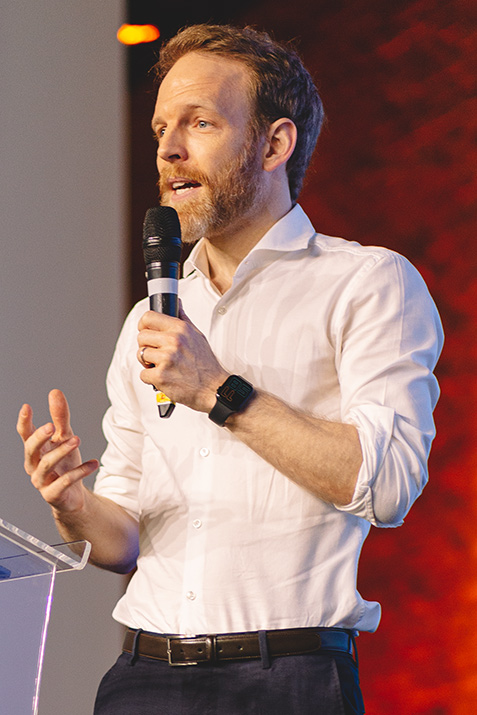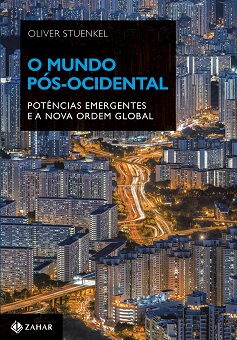
Book Review: Soft Power and US Foreign Policy. By Inderjeet Parmar and Michael Cox (eds.) London: Routledge (2010), 256 pages. R$ 124, 35 (ebook, www.amazon.com.br)
A frequently discussed question in the context of ongoing multipolarization is whether soft power in the emerging world has risen commensurately to its hard power. Could China’s soft power rival that of the United States once it becomes the world’s largest economy?
In China Goes Global: The Partial Power (reviewed here), David Shambaugh says no, arguing that China has no friends and no soft power, and that its cultural products fail to set global trends like those of the United States.
The concept of soft power is one of the most notable innovations in the discipline of international relations since the end of the Cold War. It is one of the few ideas developed in academia that has successfully been adopted by policy makers around the world. One of the reasons of its success, paradoxically, is that the concept remains vague and that it means different things to different people. Many leading academics think it is not a serious concept (similar to Huntington’s notorious Clash of Civilizations, which is little more than a catchy term). Indeed, while often mentioned in academic and policy debates, a relatively small number of academic articles and books exist that seek to make use of the concept in empirical or theoretical debates. Soft Power and US Foreign Policy, a book organized by Inderjeet Parmar and Michael Cox, is a rare example.
The term’s frequent use often leads to confusion. For example, the fact that Iranian youth like to play US-American video games, or that Chinese adolescents wear Chicago Bulls shirts is often cited as proof of US soft power. Yet it is worth remembering Nye’s original definition.
Power, Joe Nye often points out, is “the ability to affect others to get the outcomes one wants.” Soft power, then, is the use of “attraction and persuasion rather than the use of coercion or force in foreign policy. It arises from the attractiveness of a country’s culture, political ideals and policies.” Soft power is thus a country’s ability to get what it wants by attracting and persuading others to adopt your goals. It involves “leading by example.” In short, to have others want to support your goals. It differs from hard power, the ability to use the carrots and sticks of economic and military might to make others follow your will.
The young Iranian playing a Western video game is thus only an example of Western soft power if it can be shown that this would somehow increase the chances of Iran doing what the United States wants. Mere attraction without tangible follow-up action (such as calling on the Iranian government to stop opposing the United States) counts for little. One may like video games developed in the United States, but still criticize US policy in the Middle East. In the same way, lovers of samba music are not necessarily more likely to support Brazil’s candidacy for a permanent seat in the UN Security Council. The causal link between attraction and policy outcomes may sound intuitive, but it is extremely difficult to measure. We have little evidence of how it is supposed to work in practice.
Perhaps most remarkably, Nye’s soft power idea implies that people around the world are unable to distinguish between a rock band from the United States and the United States government, thus questioning citizen’s cognitive complexity.
Still, Nye argues that having an attractive culture is more likely to help than hinder a country’s national interest.
Yet even Nye himself is ambiguous about what counts as soft power and what does not. For example, he sometimes cites economic assistance as an example of soft power, even though it requires financial means, which, in turn, are an element of hard power. Rich countries can provide economic aid, poor countries cannot. Nye argues that soft power is intangible — yet, as Zahran and Ramos point out in their excellent chapter, economic credibility, though intangible, very much depends on tangible sources. Even shrewd diplomacy, seemingly an intangible good, requires a global network of embassies, which requires cash to sustain.
Many observers wrote about the BRICS’ growing soft power during the first decade of the 21st century, yet it was largely a product of their fast economic growth — i.e., an expression of their (real or expected) hard power. In the same way, many observers pointed to the West’s declining soft power — precisely because of its stagnant economy. The authors are also correct to point out that Nye blurs a complex relation between behaviors, resources and strategy when he adopts the term hard power as a synonym for command power and hard power resources, and soft power as a synonym for co-optation power and soft power resources.
Geiger’s chapter is of some interest, yet feels somewhat out of place since it analyzes Nye’s book The Power Game, a novel that is not really about soft power at all. Parmar’s chapter provides interesting insight into the role of US-American foundations in promoting a positive image of the United States during the Cold War. In their entirety, the chapters that comprise Soft Power and US Foreign Policy provide a useful critique of Nye’s concept, even though Zahran’s and Layne’s chapters stand out as they test the concept’s theoretical coherence (even though Layne’s analysis veers off into a more general critique of liberal internationalism).
Applying the idea of soft power to the case of China shows further limitations and contradictions of the idea. While the popularity of artists like Andy Warhol around the world is seen as an example of US soft power, few would say Ai Weiwei’s popularity in the West is an example of Chinese soft power. Soft power, hence, seems to be limited to state actors who like to promote their image abroad, even though they are not the agents of that power. Many other examples (The Interview, Charlie Hebdo, etc.) show that the concept fails to withstand more rigorous scrutiny.
Christopher Layne presents the reader with a cautionary tale for all those who study the idea of soft power. After World War I, Woodrow Wilson was perhaps, on a global scale, the most popular US president in history. His speeches about self-determination and global peace inspired millions in Europe and the Global South. Across the European continent, he was greeted like a rock star, and hundreds of thousands lined the streets to greet him. He certainly possessed almost unlimited soft power, and yet, during the negotiations in Versailles, Wilson failed to have it his way. Clemenceau and Lloyd George, two seasoned political operators, were tenacious defenders of their nations’ interests. To make matters worse, Wilson’s incapacity to fulfill his promises in Paris led to anti-American protests across the world, including Egypt, Korea and China — an episode beautifully described by Erez Manela’s The Wilsonian Moment. Wilson’s soft power, in short, seemed to be of little help.
Layne also rightly points out that, in essence, soft power seems to be about international legitimacy. That would explain why the United States lost, as Nye likes to point out, so much soft power when George W. Bush was president. US-American culture was as popular as ever around the world, but Bush pursued a more unilateral strategy many other countries did not agree with.
Several authors allude to the fact that, when Nye explains the role of soft power in the United States’ effort to build post-World War II order, his ideas are strikingly US-centric. In this narrative, the cultural attractiveness of the United States convinced others to voluntarily hand the reigns of power to the United States. What is overlooked is that consolidating liberal order involved the stationing of US troops in the defeated Axis powers, massive economic aid, the threats and coercion against communists in France and Italy, and efforts, in Europe and elsewhere, to impose US political and economic preferences. It was, above all, US hard power that made its leadership possible. In the same way, US victory of the Cold War must be primarily attributed to a more efficient economic system, not its cultural attractiveness.
Soft power is thus not really a stand-alone concept, and could be interpreted as a sort of narrative to preserve American hegemony by legitimizing US dominance and reassuring other states that the US will not abuse its preponderant power. It may be this concept — legitimacy through multilateralism and the broad acceptance of global norms — which stands theoretical scrutiny much better than Nye’s soft power. Given its emphasis on shared democratic values, soft power can also be read as an argument for liberal internationalism.
What does this all mean vis-à-vis the rise of China? First of all, as the above discussion shows, soft power remains so vague a concept that those who apply it to China will reach wildly differing conclusions. For any such analyses, it is therefore crucial to explain in great detail how the concept is defined.
Rather producing new insights about the rise of China, applying the idea of soft power to Asia’s leading economy will show the concept’s limitations. While Nye may initially have argued that soft and hard power are entirely independent from each other, a closer analysis shows that the two go together. If the Chinese economy continues to maintain its dynamism, its attractiveness is almost assured — provided that it can maintain domestic political stability, avoid environmental disaster, abstain from engaging in regional wars, and not break too many international rules. In fact, the Chinese government’s soft power strategy seems to have a much more moderate aim, as Shogo Suzuki explains in this chapter: to reduce global anxiety about the rise of China. Indeed, the Chinese government has eagerly embraced the concept of soft power, but its strategy amounts to little more than an old-fashioned propaganda campaign, or public and cultural diplomacy to improve China’s image abroad — hence, no real need for a new term. This does not mean that economic and military power are the only types of power, quite to the contrary. Public and cultural diplomacy, the capacity to set the agenda in the global debate, and the capacity to attract foreign talent are extremely important. Rather, it questions whether soft power is a helpful way to describe them.
Many of the arguments used by analysts (like Shambaugh) about why China’s soft power is limited – often made from a Western-centric perspective- are bound to weaken once its economic weight increases. It is true that China currently has few friends – but that will change if China is increasingly able to economically support a growing number of countries or provide them with security guarantees. In the same way, the alliances many states will entertain with the United States may weaken, as seen already in places like South Africa, Russia, Venezuela and Argentina.
And yet, China does face significant obstacles, several of which could be, to some degree associated to the realm of soft power. The lack of free speech in China will inevitably make it difficult for Chinese newspapers to be seen as trustworthy and impartial abroad, reducing their influence in global affairs. It will also keep the world’s leading minds from accepting offers from Chinese universities. Immigration to China is smaller as a result, greatly affecting China’s capacity to attract innovative industries. More seriously, it will keep Chinese students and future elites isolated from international debates, making it more difficult for them to set the global agenda later on. All these aspects provide tough challenges for the Chinese government – yet bundling them together in an amorphous, ill-defined concept of soft power may not necessarily take the debate forward.
Read also:
Book review: “The future of Power” by Joseph Nye Jr.
Book review: “China Goes Global: The Partial Power” by David Shambaugh
The myth of inward-looking China
Photo credit: Ivan Walsh








